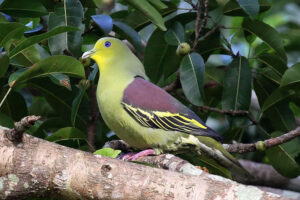Where is Lunugamvehera National Park
The Lunugamvehera National Park in Sri Lanka was established in 1995 with the goal of protecting the catchment area of the Lunugamvehera reservoir as well as the local wildlife.
The national park provides critical habitat for water birds and elephants. The catchment area is critical for maintaining the water levels in the five tanks downstream of Kirindi Oya, as well as the wetlands of Bundala National Park.
This national park also serves as a migration route for elephants between Yala and Udawalawe National Parks. The national park is located 261 kilometers (162 miles) southwest of Colombo. The national park is now open to the public after being closed due to the Sri Lankan civil war.
Lunugamvehera National Park was established in 1995. The national park provides critical habitat for water birds and elephants. It is now open to the public after being closed due to the Sri Lankan civil war. This national park also serves as a migration route for elephants between Yala and Bundala.

Physical Features of Lunugamvehera National Park
Because Lunugamvehera is located in Sri Lanka’s Dry Zone, the park is subject to annual drought, which is relieved by the southwestern monsoon. The park’s elevation is 91 meters (299 ft).
The reservoir covers 14 percent of the total land area of 23,498 hectares, or 3283 ha. Two smaller reservoirs total 50 ha.
The annual rainfall in the nearby Thanamalvila area is 1,000 millimeters (39 in). Across the national park, rainfall decreases from north to south and west to east.
The average annual temperature in Lunugamvehera is 30 degrees Celsius (86 degrees Fahrenheit).
The park’s elevation is 91 meters (299 ft) and the average annual rainfall is 1,000 millimetres (39 in).
Flora Diversity of Lunugamvehera National Park
The forest of Lunugamvehera National Park is distinguished by multiple forest layers.
These forests are a mosaic of scrubland and grassland. Drypetes sepiaria, Manilkara hexandra, Schleichera oleosa, Lannea coromandelica, Diospyros ovalifolia, Polyalthia korinti, Carmona microphylla, Croton lacciterus, and Coffea wightiana are some of the forest’s plant species.
Grassland contains a variety of grass species. In abandoned chena lands, you can find Chloris montana, Cynodon dactylon, Panicum maximum, Imperata cylindrica, Lantana camara, Chromolaena odorata, Mimosa pudica, Carmona microphylla, and Securinega leucopyrus.
Plantations of teak and eucalyptus are now common in the forest.
The forest of Lunugamvehera National Park is distinguished by multiple forest layers. Drypetes sepiaria, Manilkara hexandra, Schleichera oleosa and Diospyros ovalifolia are some of the forest’s plant species.

Fauna Diversity of Lunugamvehera National Park
The park’s flora and fauna include 21 fish species, 12 amphibians, 33 reptiles, 183 birds, and 43 mammals.
Common mammals include the Sri Lankan elephant, water buffalo, Sri Lankan sambar deer, wild boar, Sri Lankan spotted chevrotain, grizzled giant squirrel, Sri Lankan axis deer, and Asian palm civet.
Among forest amphibians, Bufo atukoralei and Fejervarya pulla are endemic. One of the aquatic reptiles is the mugger crocodile.
Here live large water birds like the grey heron, black-headed ibis, Asian openbill, painted stork, and spot-billed pelican.
The park’s flora and fauna include 21 fish species, 12 amphibians, 33 reptiles, 183 birds, and 43 mammals. Common mammals include the Sri Lankan elephant, water buffalo, and sambar deer. Among forest amphibians, Bufo atukoralei and Fejervarya pulla are endemic.

Conservation
Lunugamvehera is one of the protected areas where tufted gray langur can be found in the wild. It has been reported that several translocated elephants are starved to death.

Conclusion
In conclusion, Lunugamvehera National Park in Sri Lanka is a stunning destination that offers visitors a chance to experience the island’s natural beauty and wildlife in a unique and unforgettable way. With its diverse landscapes, rare wildlife, and ancient ruins, this park is a must-visit destination for nature and history enthusiasts alike.
At Ceylon Wild Tours, we are dedicated to helping visitors experience the very best of Sri Lanka’s natural beauty and wildlife, and Lunugamvehera National Park is certainly no exception. Our expert guides are passionate about sharing their knowledge and expertise, and ensuring that every visitor has a truly unforgettable experience.
Whether you’re interested in exploring the park’s ancient ruins, embarking on a thrilling safari adventure, or simply taking in the stunning natural beauty of the area, Lunugamvehera National Park has something to offer everyone.
So why not plan your visit to Lunugamvehera National Park today and discover the wonders of this breathtaking destination? With Ceylon Wild Tours, you can rest assured that you’ll have a trip of a lifetime, filled with unforgettable memories and experiences that will last a lifetime.












One thought on “Lunugamvehera National Park | Sri Lanka”
4